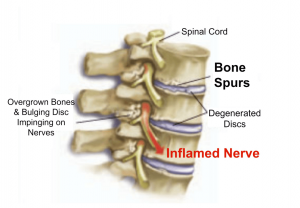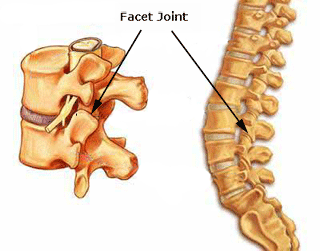Early referral – Why it is so important – Physio in Tralee
 You have been getting treatment for back pain from your physio, chiropractor or osteopath, twice a week for the past four weeks. Each time you lie there for the first fifteen minutes with a hot pack while somebody else is being treated at the same time. The therapist pops in, has a brief chat, does a quick manipulation, reassures you of your improvement, then books you in for your next appointment. You leave wondering if you are really getting any better, but console yourself with the fact that the practitioner told you that you are.
You have been getting treatment for back pain from your physio, chiropractor or osteopath, twice a week for the past four weeks. Each time you lie there for the first fifteen minutes with a hot pack while somebody else is being treated at the same time. The therapist pops in, has a brief chat, does a quick manipulation, reassures you of your improvement, then books you in for your next appointment. You leave wondering if you are really getting any better, but console yourself with the fact that the practitioner told you that you are.
Recently a client told me a story of where they endured a situation like the above for six months. Finally they decided to go to a doctor, who referred them for an MRI. The results showed a stress fracture to one of the lumbar vertebrae of the spine. In this case the treatments had been exacerbating the condition, and what was needed was rest and immobilisation.
Spinal Manipulations
Also manipulations, generally speaking, need to be done only once. They are used mainly to open a locked joint. A decent amount of soft tissue and myofascial work should be done by a physio beforehand to open up and relax the area. Otherwise the joint may revert to its locked position again shortly after the physio has manipulated it. Also as a general rule there should be a noticeable improvement in a clients condition from physio treatment to physio treatment. To illustrate the importance of early recognition and referral by your physio, let us look at a few more sinister conditions that present as back pain, requiring referral to a doctor or specialist.
Differential Diagnosis
Spondylitis; Ankylosing spondylitis is a condition where there is chronic inflammation of the spine and sacroiliac joints. This causes pain and stiffness in and around the spine, including the neck and back. Over time this condition can lead to a complete cementing together (fusion) of the vertebrae, a process referred to as ankylosis . Ankylosis causes loss of mobility of the spine.
Spondylolysis; A common cause of low back pain in adolescent athletes. It can be seen on X-ray and is a stress fracture in one of the bones (vertebrae) that make up the spinal column. It usually affects the fifth lumbar vertebra in the lower back, and less commonly the fourth. If the stress fracture weakens the bone too much the vertebra can start to shift out of place. This condition is called spondylolisthesis.
Spondylolysthesis; Spondylolisthesis is a condition whereby one of the vertebra of the spine slips forward or backward on the next vertebra. Spondylolisthesis can lead to deformity of the spine as well as a narrowing of the spinal canal (central spinal stenosis) and compression of the exiting nerve roots (foraminal stenosis). Spondylolisthesis is more common in the lower back but can also occur in thoracic and cervical spine.
Arthritis ; various types including spondylitis, reactive arthritis, osteoarthritis, juvenile onset spondyloarthritis, enteropathic arthritis, rheumatoid arthritis, polymyalgia rheumatica etc. can all present as back pain.
kidney stones ; can cause back pain
.Osteoporosis ; Osteoporosis means porous bones. It is a silent disease that usually goes undiagnosed until a bone fracture occurs. Bone is a living tissue that is constantly being turned over. Bones need normal sex hormones, calcium, vitamin D, adequate calories, proteins and weight bearing/strengthening exercise to keep them healthy. As we get older, more bone is lost than is replaced, but people with Osteoporosis lose more bone than people who do not have the disease. This causes bones to become more fragile and break or fracture more easily.
Various cancers ; pancreatic, liver cancers etc. can cause back pain.
ovarian cysts ; Ovarian cysts are fluid-filled sacs or pockets within or on the surface the female ovary. A large ovarian cyst can cause abdominal discomfort and a dull ache that radiates into the lower back and thighs.
Spinal stenosis ; This is a narrowing of spaces in the spine causing pressure on the spinal cord and nerves. About 75% of cases of spinal stenosis occur in the low back. In most cases, the narrowing of the spine associated with stenosis compresses a nerve root, which can cause pain down the leg.

Basically what I am saying in this article is that if your condition is not improving from physio session to physio session you may need to go back to your doctor for further investigation. Just keep it in mind. A good physio will probably have already referred you.





